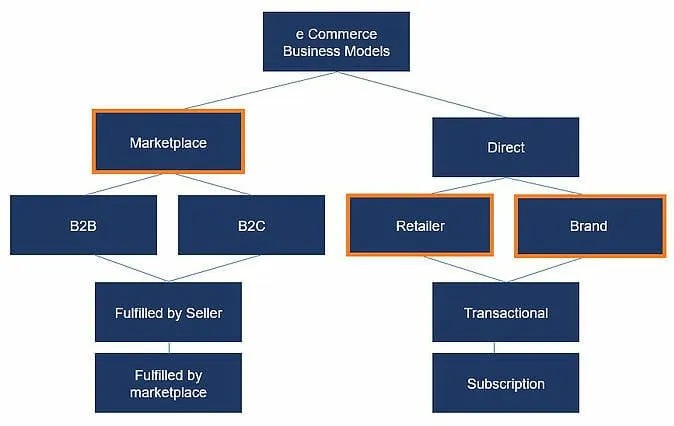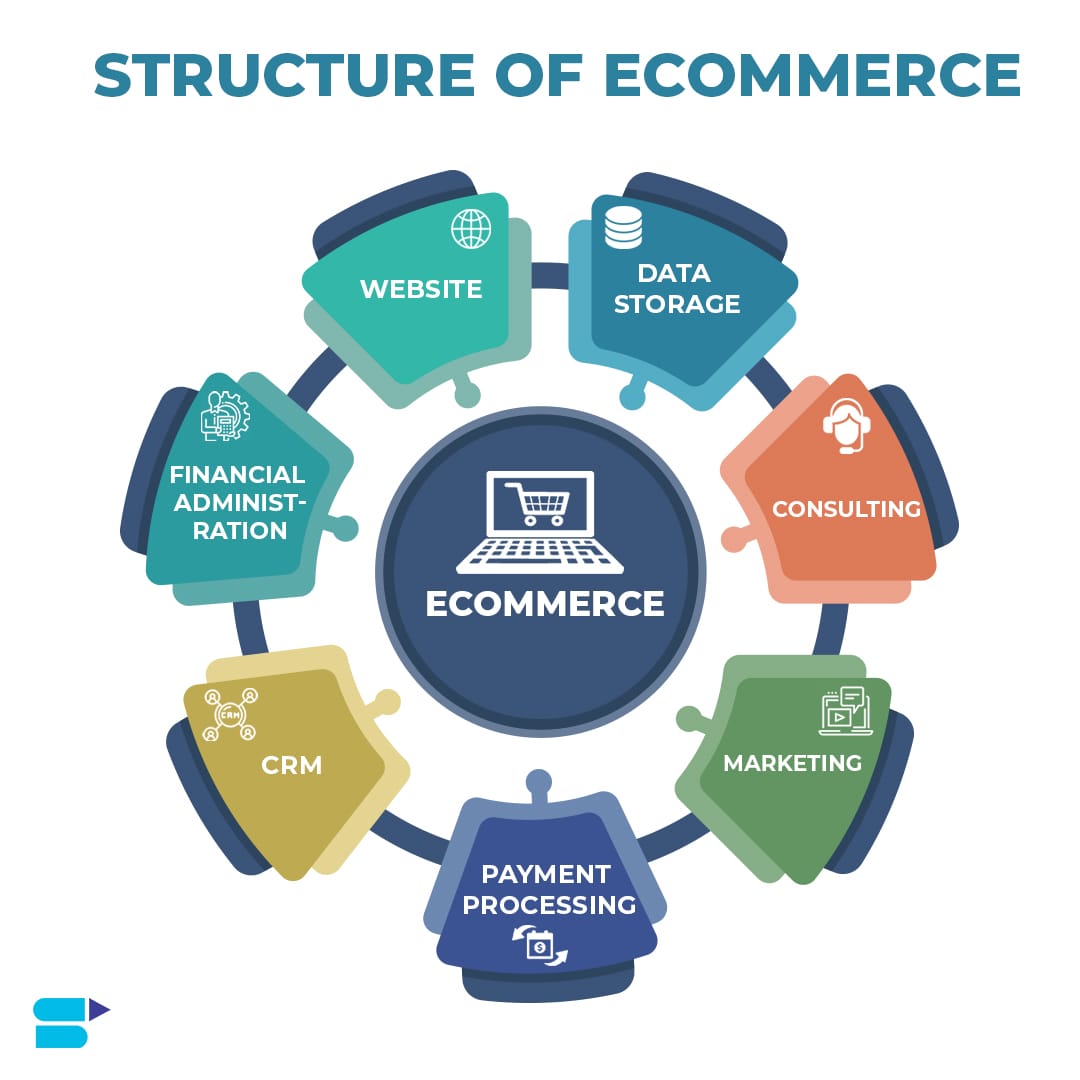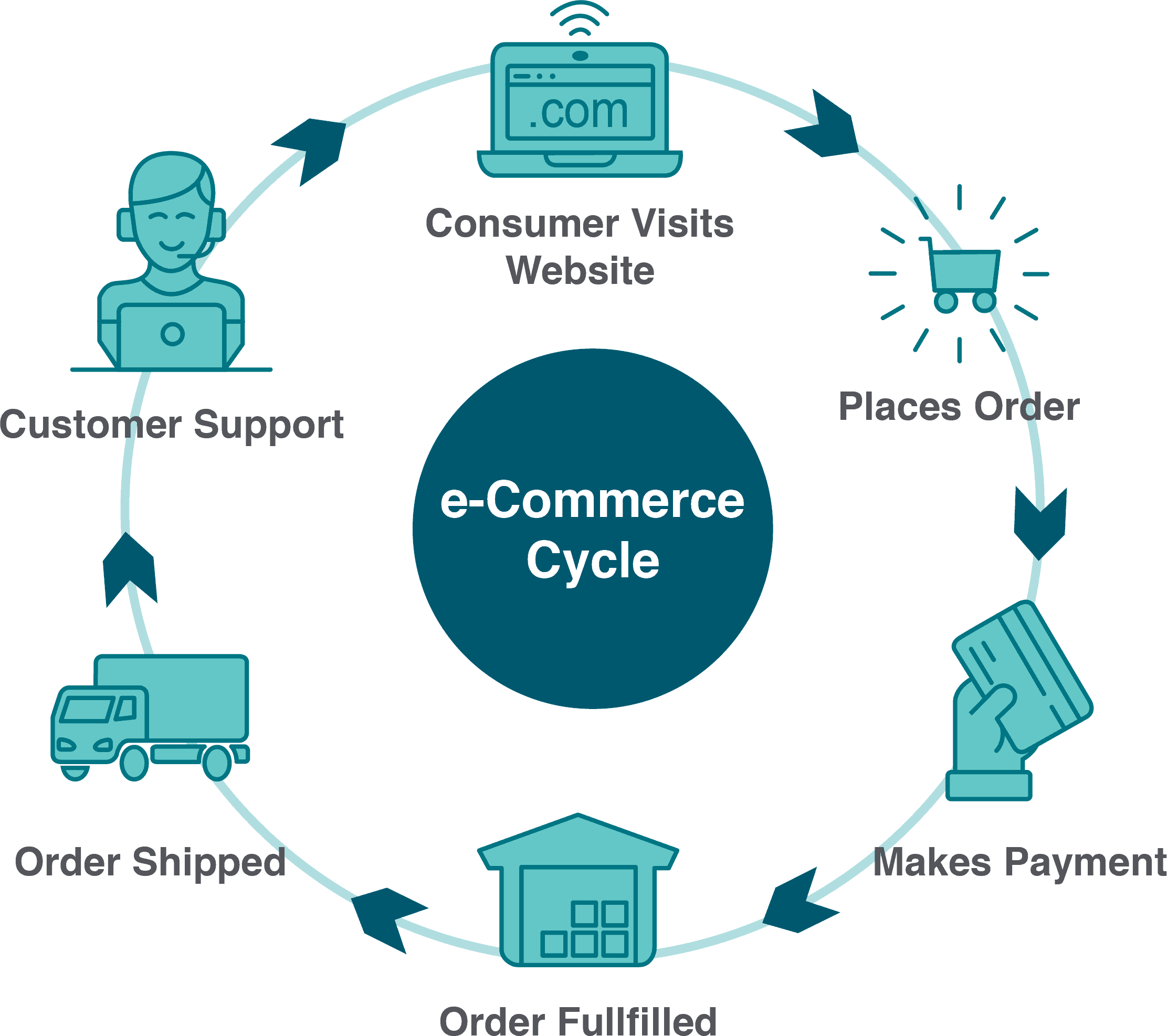E-commerce business model know-how can make or break your online venture. Trust me, diving into the world of virtual storefronts without a clear plan is like sailing a ship with no map—you might float, but you’re unlikely to find treasure. And isn’t that the goal? You want to crack the code to a thriving online business, and I’m here to lay down the essentials. Starting with the ABCs of e-commerce models, you’ll unlock the secrets behind successful online retail strategies and master the art of B2C digital storefronts. Get ready to build your empire—with the right foundation, smart setup choices, strategies to max out your revenue, and operations that run smoother than a well-oiled machine, you’ll be unstoppable. Strap in, future tycoon—your blueprint for online domination awaits!
Defining E-commerce Business Models
Understanding Online Retail Strategies
Let’s jump into online retail strategies. They are your game plan. Your aim? To sell products on the web. First, know your buyers and what they want. Then, pick tactics that fit your stuff and your audience. For example, maybe you focus on speed. Offer quick shipping. Or, perhaps you spotlight unique items. Find products not sold at the big stores.
Multi-channel selling is smart. Sell on your site, marketplaces, and social media. Why? It puts your products where your buyers are. But, remember to keep your message the same across all channels. This builds trust in your brand.
Building an e-commerce brand isn’t just about logos and colors. It’s about your story. Share why you started. Tell buyers about the folks behind the scenes. Good stories pull people in. They help folks remember you.
Customer acquisition is like growing a garden. You don’t just plant seeds. You feed them, water them, and watch them grow. Use ads, emails, and social media to bring in buyers. Keep them coming back with great products and service.
Exploring B2C Digital Store Framework
Now, let’s explore the B2C digital store framework. Your online shop is like your home. Invite people in. Make them feel welcome. Choose a layout that’s easy to navigate. Clear menus, simple search, and quick checkout matter.
Direct-to-consumer sales are key. They let you control the whole shopping trip. From the moment they spot your product to the happy box on their doorstep. Give buyers top-notch service from start to finish.
So, what’s the benefit of a B2C setup? You get to know your customers. You learn what they buy and when they shop. Use this info to make their next visit even better.
Remember, setting up an online store doesn’t stop once you’re live. Keep tweaking. Look at how folks use your site. Find ways to make shopping easier and more fun. And never forget, security is huge. Online payment gateways must be safe. Buyers trust you with their card info. Protect it like a treasure.
Lastly, e-commerce is not a ‘set and forget’ thing. It grows and changes. Keep up with trends like social commerce. Always look for new ways to get folks talking and buying.
And that’s a wrap on the basics of e-commerce business models. Start with the buyer in mind. Choose strategies that fit your products and brand. And always, always keep things fresh and secure. Your online store is more than a place to buy. It’s where your brand meets the world. Make every visit count.
Foundational Steps to E-commerce Setup
Dropshipping Business Setup Essentials
Starting a dropshipping business is like building a house. You need a solid base to keep it standing. First, find a good niche. You want products that people will buy. They should be hard to find in regular shops. Next, find a supplier you can trust. They must deliver on time and have top-notch goods. If they don’t, your customers won’t come back.
Where to sell? An online store is your shop window. Make it appealing and easy to use. Your store should load fast and look good on phones. About 70% of folks shop on their mobile devices. Make sure you step into your customer’s shoes. Is your store easy to navigate? Is buying straightforward? Think about these questions to ensure success.
Selecting the Right E-commerce Platform
Choosing where to set up your online store is critical. It’s the land where your house rests. There are many types of e-commerce platforms. Some are simple, and others offer more control. Think about what you need. A small store might do well on a user-friendly platform like Shopify. You can set up fast and start selling. If your plans are bigger, you might choose Magento. It offers more room to grow and change.
Your choice impacts your store’s look, feel, and how it works. Picking the right platform makes managing your store easier. The platform should also handle the traffic you expect. Remember, an overloaded site is like a shop too crowded to move. Customers leave. Test different platforms to see which fits your vision and your skills.
Building an e-commerce brand takes time. Your platform choice should support this journey. From logos to colors and themes, your brand must stand out. So, pick a platform that lets you be creative.
Finally, think about costs. Some platforms ask for more money as you grow. Plan ahead to avoid surprises. The right choice helps your shop thrive without breaking the bank.
In the end, your platform is your partner. It should help, not hinder, your growth. Go with one that supports your dropshipping business setup. It should be there for you as you build, sell, and dream big. Remember, in the e-commerce game, slow and steady wins. Take your time to choose wisely. Your future self will thank you.
Maximizing Revenue in E-commerce
Subscription Service Model Benefits
Let’s talk about making more money online. Imagine getting paid over and over from the same customer. Sounds great, right? That’s the magic of subscriptions. With this model, shoppers pay regularly to get products or services. It makes sure cash flows in every month. For example, think about Netflix. You pay once a month, and you watch all you want. It’s simple. Customers love it because it’s easy and no fuss.
Subscription models aren’t just for videos. Many stores sell food, books, even clothes this way. It’s a win-win. Stores get steady money, and shoppers get what they need on the regular. But it’s tricky too. You’ve got to keep folks happy, or they’ll cancel. That means you always need fresh stuff or great perks. Keep your offers exciting, and they’ll stick around for the ride.
Diversifying E-commerce Revenue Streams
Now, selling stuff online isn’t just about one thing. Don’t put all your eggs in one basket. That’s the rule, and it’s vital in e-commerce. Multiple revenue streams mean more money and less risk. How can you do this? First, you could sell products directly, like most online shops. But that’s not all.
You might think about selling to other businesses too. That’s called B2B e-commerce. Or maybe, let others sell your stuff. That gives you a slice of pie from many sales. Multi-channel selling means you’re everywhere your customer is. They could find your products on big sites like Amazon or eBay. It’s more chances to sell.
Don’t forget about digital goods. You can sell e-books, courses, or software. People love instant stuff with no shipping wait. You can also offer services like coaching or design work. And here’s another idea: become an affiliate. If folks buy from your recommendation, you get cash.
And don’t miss out on the social buzz. Social platforms are huge for selling now. Let’s not forget ads. If your site gets lots of visitors, ads can be a gold mine. Every click means more cents in your pocket. Remember, each option has its recipe. Some take more time or money to start. Others need you to be good with tech or people.
In short, more ways to make money online means you’re set, even if one way hits a bump. It’s smart business. And that’s what e-commerce is about – being smart and flexible. Keep your eyes open, try new things, and the sky’s the limit. With the right mix, you can watch your online store grow. It’s like a garden of money, and you’re the gardener. Keep planting the seeds, and soon you’ll have a forest!
Operational Excellence in E-commerce
E-commerce Fulfillment Methods and Logistics
When we talk about e-commerce, we can’t skip fulfillment. This is packing and sending out what customers buy. For online retail success, it’s super important. There are lots of ways to do this. Some store their goods and ship themselves. Others use fulfillment services. Then some follow a dropshipping business model.
Dropshipping lets you sell without holding inventory. Your supplier sends products straight to clients. This way saves money on storage. You can start fast and offer lots of items. But, it also means you have less control over shipping times and stock levels. Always work with reliable suppliers. They help make your online retail strategies work well.
If you’re setting up an online store, think about how you’ll get products to customers. Offer tracking, use good packaging, and ship fast. If you sell big things, find shippers who can handle them well. If you sell worldwide, understand global shipping. Make sure you follow all laws for shipping products.
E-commerce logistics are about planning. It’s how you get products from A to B. Good e-commerce logistics solutions help. They let you keep an eye on your inventory, manage orders, and ship on time. Being great at this part of your business can set you apart from others.
Ensuring a Smooth E-commerce Checkout Process
Now let’s figure out checkout. This is the last step before someone buys. If your checkout process is hard, people might not finish buying. We want it to be smooth and easy. Here’s how:
First, make sure your online store is easy to use. People should find what they need fast. Next, offer different online payment gateways. Some like credit cards, others use things like PayPal. Let people pay their way.
You also need to keep personal info safe. Use e-commerce website security to protect data. Show badges that say your site is safe. This builds trust. People need to feel safe to give you their money.
Also, be clear about costs. Tell them about shipping and taxes early. No one likes surprises at checkout. Last, give good customer service. Be there to help if people have trouble. Answer questions fast. This can turn a maybe into a yes.
Store setup and checkout are key parts to online retail. Get these right, and you’ll be on your way to doing well in e-commerce. Remember, take care of the details and the big picture will shine. Your store could be the next big hit. Just start with the right steps and stay focused on your goals.
In this post, we walked through the nuts and bolts of e-commerce business models, from knowing online retail tactics to checking out the B2C digital stores. We then dived into the steps for setting up shop, looking at dropshipping basics and picking a solid e-commerce platform.
We also talked about how to make more money in e-commerce. We saw how subscription services keep cash flowing and why having many ways to make money helps.
Lastly, we covered running an e-commerce business smoothly. We learned the best ways to get products to customers and how to make buying from your online store easy for shoppers.
To close, remember that success in e-commerce comes from understanding your model, setting up right, making smart money moves, and handling orders well. Keep these tips in mind, and you’ll build an e-commerce business that can go the distance.
Q&A :
Sure, let’s create some SEO-optimized FAQs for the keyword “E-commerce business model.”
What are the various types of e-commerce business models?
When exploring the realm of e-commerce, it’s crucial to understand the different models that businesses can operate under. Key types include B2C (Business-to-Consumer), B2B (Business-to-Business), C2C (Consumer-to-Consumer), and C2B (Consumer-to-Business). Each model serves a distinct market dynamic and sales process, from traditional retail operations to online marketplaces where consumers sell goods and services to each other or to businesses.
How does the dropshipping e-commerce model function?
Dropshipping stands as a streamlined e-commerce model where the seller doesn’t keep products in stock. Instead, when a customer places an order, the retailer transfers the order details to a third-party supplier who then directly ships the product to the customer. This model minimizes inventory risk and upfront costs, effectively enabling the retailer to operate an e-commerce business without a traditional warehouse setup.
What is the role of m-commerce in e-commerce business models?
M-commerce, or mobile commerce, refers to online transactions conducted via mobile devices. It’s increasingly playing a critical role in e-commerce, given the widespread adoption of smartphones and tablets. Businesses adopting e-commerce models are optimizing their websites for mobile users, developing apps, and utilizing mobile payment systems to cater to the growing number of customers shopping on the go.
Can you explain the subscription e-commerce business model?
The subscription e-commerce model is built on recurring, regular purchases of products or services. Customers sign up for periodic (typically monthly or yearly) deliveries or access to products/services, which brings a predictable revenue stream for businesses. This model has gained traction across various industries, from food and beverage to personal care and entertainment, due to its convenience for consumers and reliable income for businesses.
What are the key components to consider when building an e-commerce business model?
Starting an e-commerce business requires careful planning and several key components. These include selecting the right type of e-commerce model, establishing a user-friendly online platform, implementing efficient supply chain management, crafting a digital marketing strategy, and ensuring secure payment processing. Additionally, customer service, data analysis, and mobile optimization are crucial elements that can significantly enhance the performance and success of an e-commerce business.
By addressing these questions, an e-commerce business can provide valuable information that not only helps potential business founders and entrepreneurs but also leverages the SEO potential of “People Also Ask” on Google.
